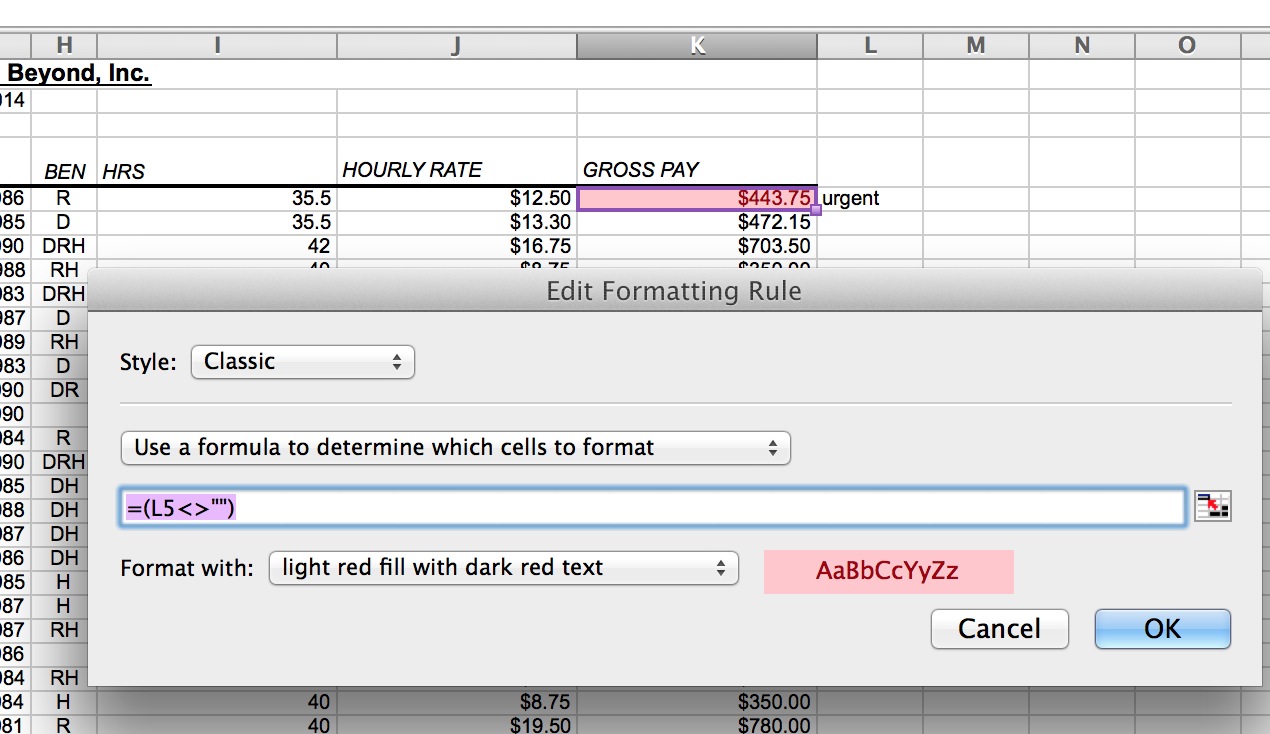


Then adjust settings in the "Apply rule to" section. To edit a rule, select the rule and click the "Edit Rule" button. In the example shown, the rule manager displays two rules like this: You can access existing rules at Home > Conditional Formatting > Manage Rules. If you already have a rule set up that is not correctly formatting all values as needed, edit the rule and change the cell selection option if needed. Editing existing rules to fix broken formatting Note: selecting "All cells showing sum of "sales values" will include grand total rows and columns as well, which you ordinarily don't want. You can see two cells are combined and the percentage formatting is kept. Click to select cell C1, and then copy and paste formula A1 & ' ' & TEXT (B1,'0.00') into the Formula Bar, and then press the Enter key.
#Conditional formatting excel 2016 mac how to#
"All cells showing sum of "sales values" for name and "date" How to combine cells and keep the cell formatting in Excel hot 1. At the top of the window, you will see setting for which cells to apply conditional formatting to. Make the changes that you want, click OK, and then click OK again. Select the rule, and then click Edit Rule. On the Home tab, click Conditional Formatting, and then click Manage Rules. Select any cell in the data you wish to format and then choose "New rule" from the conditional formatting menu on the Home tab of the ribbon. Click in the range that contains the conditional formatting rule that you want to change. The best option is to set up the the rule correctly from the start. If you created conditional formatting rules based on "selected cells" only, you may may find that the conditional formatting is lost or not applied to all data when the pivot table is changed, or when data is refreshed. Pivot tables are dynamic and change frequently when data is updated. The green shows the top 5 values using a rule like this: In the example shown, there are two rules applied.
#Conditional formatting excel 2016 mac for mac#
Configure alternate row shading in Excel 2011 for Mac This lesson shows you a quick and easy way to do it on Excel 2011 for Mac. There are a number of ways you can achieve this. If you are working with large tables of data in Excel, you can make your spreadsheet easier to read by formatting alternate rows to be shaded a different colour.


 0 kommentar(er)
0 kommentar(er)
